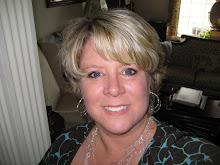Here are some more books you have got to have!
Who doesn't love counting books!
Throw in anything about nature and I am hooked! This book is a great counting book that uses nature, but if you use it right, it can be used for some
much more!
I love books with realistic
illustrations and this one delivers! Two two-eyed gulls, with two wide wings,
shrieking and swooping and pecking up things! 2 white gulls, with 2 eyes each,
have 4 bright eyes to watch the beach! Hmmm, see a little addition as well!!
Don't you just love the rhyme and
rhythm of this book! Numbers are used by scientists to describe objects (to tell how much or how many of something).
Yes, my friends, math is a language a scientist must be able to speak. Number
words tell us a lot. As you read the passage above, even without the book,
couldn't you just see the picture forming in your mind?
There is also another neat feature
of this book-see if you can see what I mean.
Make some observations of this picture. Do you see
something cleaver in the lower right hand side of the picture? There are 4 little
rocks. So while the children are focused on the four seals they see between the
two pages, there are also 4 little rocks. Each page has hidden objects that
also represent the number on the page! How cool. So you can ask your little
reader-do you see 4 other objects on this page? Where and what are they?
Be sure to add this counting book to your library!
Water Dance by Thomas Locker
For all my friends who teach in the upper grades,
this book is for you! Thomas Locker has several books that I love; but
this is one of my favorites! In Virginia, students have to understand the water
cycle by third grade. Cycles are important processes in the natural world.
Cycles often exist within systems. They are just events that repeat themselves
while helping to maintain balance. The water cycle circulates water as it
changes phase due to changes in temperature. I always tell teachers, the water
cycle is not just about singing the cute little song (yes there is a song that
goes with it). Children need to understand the water cycle is a natural example
of matter changing phase. Water can exist in three states-solid, liquid, and
gas. To change, it needs either heat or the absence of heat (cold). Heat from
the sun evaporates water and changes it from a liquid to a gas. As the gas
travels higher up in the atmosphere, the cooler temperatures help to change it
back to its liquid state. Thomas Locker describes the next step in the water
cycle so much better than I can, so check it out-
" Some people say that I am one thing. Others
say I am many. Ever since the world began, I have been moving in an endless
circle. Sometimes I fall from the sky. I am rain."
Beautiful! Add in his incredible paintings and you
have the recipe for a classic!
"Sometimes I cascade. I
tumble down, down, over the moss-covered rocks, through the forest shadows. I
am the mountain stream."
So what phase/state of matter is water taking now
in the water cycle? Yep, you guessed it! Liquid state! When you understand how
content connects with the bigger ideas in science, it is easy for students to
learn!
Get this book to make the water cycle come to life!
I hope you are inspired to use reading to spark a
love of science (and math as well)! Now go read!






No comments:
Post a Comment
Leave a message about my blog!